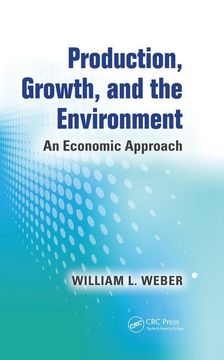Share
Production, Growth, and the Environment: An Economic Approach
William L. Weber
(Author)
·
CRC Press
· Paperback
Production, Growth, and the Environment: An Economic Approach - Weber, William L.
£ 69.29
£ 76.99
You save: £ 7.70
Choose the list to add your product or create one New List
✓ Product added successfully to the Wishlist.
Go to My WishlistsIt will be shipped from our warehouse between
Thursday, June 13 and
Tuesday, June 18.
You will receive it anywhere in United Kingdom between 1 and 3 business days after shipment.
Synopsis "Production, Growth, and the Environment: An Economic Approach"
Written in a way that facilitates understanding of complex concepts, laws, and policy, Production, Growth, and the Environment: An Economic Approach explores how economic growth usually makes people better off, but also asks at what environmental cost? These costs are not often realized until after the fact, when their remediation is more expensive, and sometimes not reversible. Very few books on environmental economics model the joint production of desirable and undesirable outcomes in any depth. This book fills that void. It discusses the demographic transition and the escape from the Malthusian trap. It also covers the environmental Kuznets curve hypothesis that examines the relation between polluting outputs and economic welfare. The book integrates environmental valuation methods with the production possibility frontier (PPF) approach. It presents both types of outcomes in a PPF framework that accounts for scarcity and allows the concepts of technical and allocative efficiencies to be introduced and measured. The PPF can then measure technological progress/regress and can be used to measure whether resource use is sustainable over time. It can also be used to determine shadow prices for non-market desirable outputs such as ecological services and non-market undesirable by-products such as SO2, NOx, and CO2 that arise from fossil fuel combustion.The beauty of the PPF framework is that it can be depicted in simple two-dimensional diagrams that make the concepts easy to understand. The author uses this framework to introduce concepts such as technical efficiency, allocative efficiency, technological progress/regress, shadow pricing, externalities, public goods, pollution taxes, and permits. In addition, each chapter has numerous problems and discussion questions that provide examples and practice in using the introduced theories. The book also includes a chapter that shows how the solver routine in Excel can be used to measure technical and allocative efficiency. This gives you the tools to examine all outcomes and therefore make a decision that takes into account the environmental challenges along with any economic benefits.

